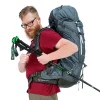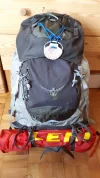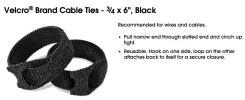I've used the Osprey Levity 45 and the Gossamer Gorilla 40. The Osprey is better if the weather is humid or hot. Problem with packs of higher volume is to begin with, they are heavier and when you load them up to the top the top weight throws your balance off a lot more than lower volume packs. ....................
I absolutely agree that it is ideal to have the smallest capacity backpack that will comfortably carry all the gear and clothing needed, without cramming and squishing it. I also do not discount your own unique experiences that you relate in your post.
Because my experiences have been different, I thought perhaps some of my observations may be useful to the thread as added to your own.

I have never found a larger backpack, which was fitted properly to my spine length and waist sizing, to have the same issues that you have experienced with wiggling and friction and chafing, etc.
I agree that it is possible. It is why I spend a lot of time, when consulting with beginning backpackers, to properly size and fit their backpacks. If a larger volume backpack is chosen, then it becomes even more critical to assure proper fitting and adjustments to the shoulder harness and waist/hip belt assemblies. Proper tensioning of the straps, if the pack is properly sized to the wearer to begin with, has not created the wiggling and friction you have experienced, even with heavier loads.
Sometimes smaller means lighter, but not always. In fact, the larger volume Gossamer Gear Mariposa is actually lighter than the Gorilla, but has better adjustability with the inclusion of its load lifter straps (which are lacking on the Gorilla), due to it potential higher weight load.
A larger volume backpack is adaptable to the load required. For example, on my PCT and Colorado Trail thru-hikes, when I needed to carry all food and fuel for 7 to 10 day stretches between re-supply points, my total load weight was about 22 to 24 pounds. The backpack, Mariposa, that was used on those trips were also used on my
Camino Frances pilgrimages where my total load weighed only 9 to 10 pounds.
A large capacity backpack does not mean that it has to be filled. For Camino, the Mariposa was filled to only 1/2 its volume, and that was with things packed and organized in a loose manner.

I agree with the potential problem of load shifting and the potential for top-heavy balance issues. A user can deal with those issues by knowing the guidelines for proper loading of the backpack, and using the compression straps to eliminate shifting of contents. This will keep the center of gravity from creating balance issues.
This is a guideline I wrote about backpack fitting and adjustments that I have posted before. Given the various topics in this thread, I thought it might be useful.
 Correct Sizing of a Backpack
Correct Sizing of a Backpack
The size of the pack is determined by the length of your spine, not by how much the pack can carry.
Measuring for a correct fit involves determining your spine's proper length. That measurement is done by using a tape measure and measuring from the protruding 'knob' on the back of your neck which is at the base of the cervical spine, to the place on your spine that is even with the top of the crest of your hips.
- Tilt your head forward and feel for the bony bump where the slope of your shoulders meets your neck. This is your 7th cervical (or C7) vertebra—and the top of your torso length.
- On each side of your body, slide your hands down the rib cage to the top of your hip bones (aka the iliac crest). With index fingers pointing forward and thumbs pointing backward, draw an imaginary line between your thumbs. This spot on your lumbar is the bottom of your torso measurement.
- Stand up straight and measure - or have your friend measure - the distance between the C7 and the imaginary line between your thumbs. That’s your torso length.
(
The above instruction set and picture courtesy of REI)
Once you have that measurement in inches or centimeters, you can then look at the backpack manufacturer's sizing guide. This guide will be used to match your spine length, to their stated size range.
Sometimes the sizes are expressed as Small to Extra Large. Sometimes that size scale will combine the sizes like: S/M, M/L, L/XL. When the sizes are combined, it usually means that there is a good amount of adjustability to the frame of the pack to customize the fit. That will usually be in the shoulder harness and the hipbelt so that a fine tuned fit can be achieved.
Here is a good video which will help with fitting. Ignore the reference to the manufacturer as the method is pretty universal.
Fitting The Shoulder Harness
First, let me mention that there are differences in the shapes of shoulder straps. The standard shoulder strap shape has been what some manufacturers describe as a "J" shape. This shape tends to fit the chest shape of the male better than the female due to the lesser fullness of the chest. However, even with some men who have bigger chests, the J strap shape can be uncomfortable.
A few manufacturers, ULA and Six Moons Design are the most notable, have developed what is called an "S" shaped strap. This shape has solved many of the fit issues for women, allowing for the straps to properly sit on the shoulders without the uncomfortable compression and chafing due to breasts of larger chests. Here is a link which shows the difference between the two strap shapes:
The shoulder harness should wrap around over your shoulders and sit slightly below the top of the shoulder. The shoulder straps should sit comfortably toward the middle of the shoulder girdle, although that may vary a bit. It should not feel like they are going to slip off your shoulders or sit tight against the base of your neck.
The sternum strap should NOT be required to keep the shoulder straps in place. The sternum strap does connect the shoulder straps, but it is designed to help control where the straps sit on the shoulders with excess pack movement; it is not meant to overcome a poor fit and placement of the shoulder straps.
After fastening the sternum strap in place, pull the adjustment strap until you feel a bit of tension.
The sternum strap on a good pack can adjust up and down on the shoulder straps. The usual placement is somewhere just below the collar bone, but body types and builds will cause a variation of where the sternum strap placement feels best.
Hip Belt Adjustments
For the hip belt, the pad of the belt should sort of 'cradle' the crest of the hip bone: the top of the pad should be slightly above the top of the crest while the bottom of the pad should be slightly below the top. Again, the belt, when it is snugged down, should cradle. The belt should not entirely sit above your hips so that the pad compresses your waist, nor should the entire pad sit below the crest of your hips totally squeezing the hip bones.
There is a lot of misinformation about how a pack's load is distributed between shoulders and hips. It is
NOT true that the waist/hip belt carries the entire load of the pack. It definitely CAN do that, but doing so is undesirable.
There
are reasons which make it necessary to keep the shoulder harness unweighted with the full load weight on the hipbelt. These include damage or injury to the shoulder girdle. There are folks who prefer a total load on the hipbelt even though their shoulder girdle is healthy, but it is a practice which has potential complications associated with it. Even so, it is up to an individual to decide.
If the Hip/waist belt carries the entire weight of the pack
- it means the shoulder harness is unweighted and there can be significant pack movement which, during difficult walking terrain, can create problems with your center of gravity. I have seen people lose their balance and fall as a result.
- It also can result in your core muscles being overworked, stressed and fatigued trying to compensate from that extra movement.
- All of that weight on the pelvis can create significant compression forces by requiring the hipbelt to be over-tightened in order to prevent it from slipping down. This can cause numbness and pain as blood flow and nerve compression is experienced.
- All of the weight on the hipbelt will also place additional strain to the hip sockets and knees.
The load ratio will be about 5 to 15 percent for the shoulders and 85 to 95 percent on the hips. This will allow for the proper engagement of your core muscles to help carry the backpack.
Steps To Adjusting a Backpack Before Walking
I'll add a link to a video (ignore the manufacturer) that shows the best steps to follow when putting on a pack and adjusting it. The basic steps are these:
- Loosen all of the straps on the shoulder harness and hip belt.
- Put on the pack and very slightly tighten the shoulder straps so that the hip belt is slightly below the hips.
- Shrug your shoulders up, and then fasten the waist belt as you are getting it roughly into position.
- Slightly tighten the shoulder straps to assist with the hip belt adjustment.
- Position the hip belt padding to let the padding sit half above and half below the crest of the hips. The padding of the belt should never sit entirely above the hips. The padding should sort of wrap itself over the top of the hip bone and hug the hips.
- Tighten the belt just enough to keep it in position. At this point, nearly 100% of the packs weight is resting on the hips.
- Snug the shoulder straps to take up 5 to 15 percent of the packs weight. You will feel just a slight unloading of the weight off the hips.
- At the top of the shoulder straps and toward the pack, are smaller straps called 'load lifters'. Grasp them and pull to your front. You will feel the weight of the pack lift up slightly and pull more snugly toward your back. This helps with center of gravity and balance. You can experiment with how snug or how loose you want to pull on the straps. A properly adjusted load lifter strap will form a sort of 45 degree angle when viewed from the side.
- On some waist/hip belts there can be a small strap connected to each side of the belt. Again, pulling forward on those straps will bring the bottom of the pack closer to your back, helping with balance as you are walking.
It is important to remember that after you make the first pack adjustment before starting to walk, that you will frequently be changing those adjustments while walking: tightening, loosening, pulling, having the pack higher or lower....
Pack adjustments are a dynamic thing, not a static thing. As you walk, how the pack feels, pressure points, center of gravity, etc WILL change. This is why it is important to become so familiar with your pack that making adjustments becomes second nature as you walk, requiring no real thought or consideration.
A good pack, loaded and adjusted properly will be so integrated to your body while walking that you sometimes forget you are wearing it. Now, NOTHING will make a weighted load in a pack disappear, but it will help keep that load from becoming an agonizing exercise in torture





















